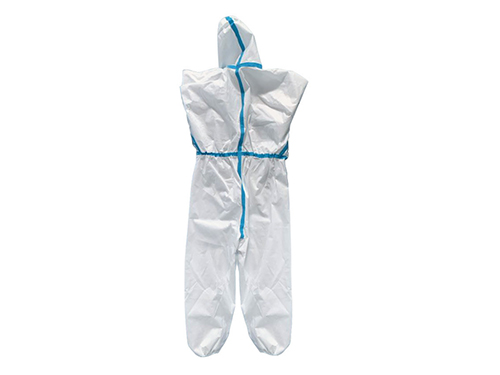Protective Clothing

Medical Protective clothing refers to the protective clothing used by doctors, nurses, public health personnel, cleaning personnel and other people who enter a specific medical and health area, such as patients, hospital visitors, people who enter an infected area. Its role is to isolate bacteria, harmful ultra-fine dust, acid-base solution, electromagnetic radiation, to ensure the safety of personnel and keep the environment clean.
Performance requirements for protective clothing
In addition to the specifications and safety requirements of the materials themselves, the performance of medical protective clothing mainly includes protective, comfort, physical and mechanical properties.
1. Protectiveness
Protection is an important performance requirement of medical protective clothing, which mainly includes liquid barrier, microorganism barrier and particle barrier.
Liquid barrier refers to the medical protective clothing should be able to prevent water, blood, alcohol and other liquid penetration, with more than 4 hydrophobic, so as not to stain clothes and human body. Avoid the patient's blood, body fluids and other secretions during the operation will carry the virus to the medical staff.
Microbial barrier includes the barrier to bacteria and viruses. The barrier to bacteria is mainly to prevent the contact and reverse transmission from the surgical wound to the patient during the operation. The main barrier to the virus is to prevent health care workers contact with the patient's blood and body fluids, which carry the virus caused cross-infection between doctors and patients.
Particulate barrier refers to the prevention of airborne transmission of viruses in the form of aerosol or attached to the skin surface to be absorbed by the body.
2. Comfort
Comfort Includes Breathability, water vapor penetration, drape, quality, surface thickness, electrostatic properties, color, reflectivity, odor, and skin sensitization. The main performance is breathable, moisture permeability, in order to enhance the protective effect, protective clothing fabric is usually laminated or laminated treatment, resulting in heavy and breathable, poor moisture permeability, long-term wear is not conducive to sweat and heat. ANTISTATIC requirements are designed to prevent static electricity in the operating room from causing the gown to absorb large amounts of dust and bacteria to the patient's wound, at the same time, the static electricity can prevent the spark from detonating the volatile gas in the operating room and affect the accuracy of the precision instruments.
3. Physical and mechanical properties
Physical and mechanical properties mainly refer to the tear resistance, puncture resistance and wear resistance of medical protective clothing materials. To avoid tearing, puncturing place for bacteria and viruses to provide channels, wear-resistant can prevent floc place for bacteria and viruses to provide a place for reproduction.

